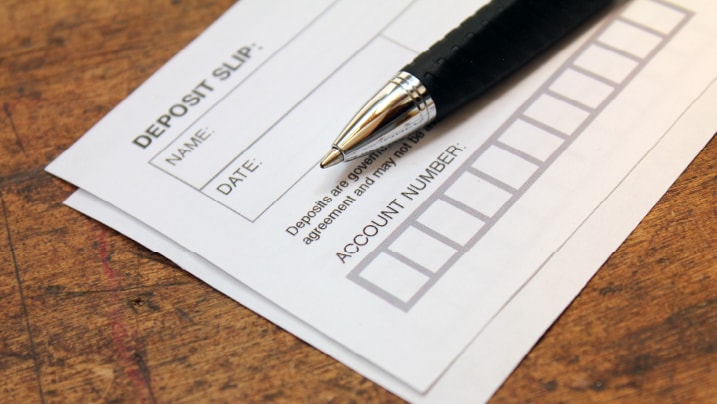CKYC Registry
-
Customer Service Contact us Service request Locate a branch
Find all the help you need
Scan the QR, get our app, and find help on your fingertips

Help CenterSupport topics, Contact us, FAQs and more
-
Login
Are you ready for an upgrade?
Login to the new experience with best features and services
-
Login
Are you ready for an upgrade?
Login to the new experience with best features and services
- Accounts
-
Deposits
IDFC FIRST Bank Deposits
View all Deposits -
Loans
IDFC FIRST Bank Loans
View all Loans - Wealth & Insure
-
Payments
IDFC FIRST Bank Payments
View all Payments -
Cards
IDFC FIRST Bank Cards
View all Cards - Blogs
- Corporate Account
-
Cash Management Services
IDFC FIRST Bank Cash Management Services
View all Cash Management Services - Supply Chain Finance
-
Corporate Lending
IDFC FIRST Bank Lending
View all -
Treasury
IDFC FIRST Bank Treasury
See more details - NBFC Financing
Support topics, Contact us, FAQs and more
- IDFC FIRST Bank Accounts
-
Savings Account
-
Corporate Salary
Account -
Senior Citizens
Savings Account -
First Power
Account -
Current Account
-
NRI Savings
Account -
TASC Institutional
Account -
Savings Account
Interest Calculator
- IDFC FIRST Bank Deposits
-
Fixed Deposit
-
Recurring Deposit
-
NRI Fixed Deposit
-
Safe Deposit Locker
-
FD Calculator
-
RD Calculator
- IDFC FIRST Bank Loans
-
Personal Loan
-
Consumer Durable
Loan -
Home Loan
-
Business Loan
-
Professional Loan
-
Education Loan
-
New Car Loan
-
Pre-owned Car Loan
-
Two Wheeler Loan
-
Pre-owned Two
Wheeler Loan -
Commercial Vehicle
Loan -
Gold Loan
-
Loan Against Property
-
Loan Against Securities
-
Easy Buy EMI card
-
Personal Loan
EMI Calculator -
Education Loan
EMI Calculator -
Home Loan
EMI Calculator -
EMI Calculator
-
Personal Loan Eligibility Calculator
- IDFC FIRST Bank Wealth & Insure
-
FIRST Select
-
FIRST Wealth
-
FIRST Private
-
Mutual Funds
-
Sovereign Gold Bond
-
Demat Account
-
Term Insurance
-
Life Insurance
-
Health Insurance
-
General Insurance
-
Bonds
-
Loan Against
Securities -
Portfolio Management
Service
- IDFC FIRST Bank Payments
-
FASTag
-
Credit Card
Bill Payments -
UPI
-
Funds Transfer
-
Forex Services
-
Pay Loan EMI
- IDFC FIRST Bank Cards
-
Ashva :
Metal Credit Card -
Mayura :
Metal Credit Card -
FIRST Millennia
Credit Card -
FIRST Classic
Credit Card -
FIRST Select
Credit Card -
FIRST Wealth
Credit Card -
FIRST WOW!
Credit Card -
Deals
-
Debit Cards
-
Co-branded Cards
-
Credit Card
EMI Calculator -
FIRST Corporate
Credit Card -
FIRST Purchase
Credit Card -
FIRST Business
Credit Card
- Premium Metal Credit Cards
-
AshvaLifestyle1% Forex₹2,999
-
MayuraLifestyleZero Forex₹5,999
-
FIRST PrivateInvite Only
- Best for travellers
-
MayuraZero ForexMetal₹5,999
-
Ashva1% ForexMetal₹2,999
-
FIRST WOW!Zero ForexTravelLifetime Free
-
FIRST SWYPTravel OffersEMI₹499
-
FIRST Select1.99% ForexLifestyleLifetime Free
-
FIRST Wealth1.5% ForexLifestyleLifetime Free
-
Club VistaraTravelLifestyle₹4,999
-
IndiGo IDFC FIRST Dual Credit CardTravelLifestyle₹4,999
- Max benefits, Free for life
-
FIRST Classic10X RewardsShoppingNever Expiring Rewards
-
FIRST Millennia10X RewardsShoppingNever Expiring Rewards
-
FIRST Select10X RewardsLifestyle1.99% Forex
-
FIRST Wealth10X RewardsLifestyle1.5% Forex
-
FIRST WOW!RewardsTravelZero Forex
-
LIC ClassicRewardsInsuranceShopping
-
LIC SelectRewardsInsuranceShopping
- Reward Multipliers
-
AshvaLifestyleMetal₹2,999
-
MayuraLifestyleZero Forex₹5,999
-
FIRST ClassicNever Expiring RewardsShoppingLifetime Free
-
FIRST MillenniaNever Expiring RewardsShoppingLifetime Free
-
FIRST SelectNever Expiring RewardsLifestyleLifetime Free
-
FIRST WealthNever Expiring RewardsLifestyleLifetime Free
- Rewards & Credit on UPI
-
FIRST Power+FuelUPI₹499
-
FIRST PowerFuelUPI₹199
-
FIRST EA₹NVirtual1% Cashback₹499
-
FIRST DigitalVirtualUPI₹199
-
IndiGo IDFC FIRST Dual Credit CardUPITravelDual cards
- Fuel and Savings
-
FIRST PowerRewardsUPI₹199
-
FIRST Power+RewardsUPI₹499
-
LIC ClassicRewardsInsuranceShopping
-
LIC SelectRewardsInsuranceShopping
- Express and Flaunt
-
AshvaMetal1% Forex₹2,999
-
MayuraMetalZero Forex₹5,999
-
FIRST SWYPEMIOfferMAX₹499
-
FIRST MillenniaRewardsShoppingLifetime Free
- FD Backed rewarding Credit Cards for all
-
FIRST EA₹NVirtualCashback₹499
-
FIRST WOW!Zero ForexTravelLifetime Free
-
CreditPro Balance TransferTransfer & SaveReduce InterestPay Smartly
- IDFC FIRST Bank NRI Forex Solutions
-
Send money to India-Wire transfer
-
Send money to India-Digitally
-
Send money abroad
-
Max Returns FD (INR)
- IDFC FIRST Bank MSME Accounts
-
Platinum Current
Account -
Gold
Current Account -
Silver Plus
Current Account -
Merchant Multiplier
Account -
Agri Multiplier
Account -
TASC Institutional
Account -
Dynamic Current
Account -
World business
Account -
First Startup
Current Account
- IDFC FIRST Bank Business Loans
-
Business Loan
-
Professional Loan
-
Loan Against Property
-
Business Loan for Women
-
Working Capital Loan
-
Construction Equipment Loan
-
Machinery Loan
-
Healthcare Equipment Loan
- IDFC FIRST Bank Business Solutions
-
Payment Solutions
-
Tax Payments
-
Doorstep Banking
-
Point of Sale (POS)
-
Escrow Accounts
-
NACH
-
Payment Gateway
-
UPI
-
Virtual Accounts
-
As per amendment in the Income Tax Rules, PAN or Aadhaar are to be mandatorily quoted for cash deposit or withdrawal aggregating to Rupees twenty lakhs or more in a FY. Please update your PAN or Aadhaar. Kindly reach out to the Bank’s contact center on 1800 10 888 or visit the nearest IDFC FIRST Bank branch for further queries.
-
-
Most Searched
Sorry!
We couldn’t find ‘’ in our website
Here is what you can do :
- Try checking the spelling and search
- Search from below suggestions instead
- Widen your search & try a more generic keyword
Suggested
Get a Credit Card
Enjoy Zero Charges on All Commonly Used Savings Account Services
Open Account Now
Savings Account
Cheque Deposit or Cash Deposit Slips and How to Fill Them
Key Takeaways
A deposit slip is a printed form, that you are required to fill in, in order deposit money in your account, at the bank branch, used for both cheque and cash.
It is a proof that the money has duly been deposited into your bank account, and the slip can be used as a reference pertaining to the transaction, in case of any dispute.
A deposit slip must contain the receipient's bank account number, name of the account holder or the organisation's name, issuing bank's name, branch name, the amount, date of deposit, and the date of cheque (as applicable)
Deposits and withdrawals are two most regular banking transactions for most of us, for managing our personal finances on a day-to-day basis While there are several ways to deposit funds into your savings account, a deposit slip is generally required when you visit the bank. Whether depositing money through cheque or cash, you must fill out the slip to deposit money into your account. These slips essentially contain details about your bank account such as name, account number, deposit amount etc. Read on to learn everything about cash and cheque deposit slips.
READ MORE
What is a deposit slip?
A deposit slip is a paper form that enables you to deposit money in your account, typically through cash or cheque. It holds information about the amount you want to deposit, the account where the money will be deposited, the currency denominations and their number, etc. After you fill out the deposit slip and submit it along with the cash or cheque, the banking personnel process the transaction and credit the money into your bank account. Once successfully done, you receive the acknowledgement slip with date stamp and signature of the banking personnel as a receipt of your transaction.
The deposit slip is an important piece of document for you as well as the bank. It acts as a proof that funds have accurately been deposited into your bank. In case of any disputes, the slip can be used as a reference pertaining to the transaction.
The money deposited in a bank could be both in form of a cheque or cash.
What does a cheque or cash deposit slip contain?
A cheque or cash deposit slip contains the following details:
- The bank account number you are crediting the money to
- Name of the account holder if it is a savings account
- The organisation or company’s name in case it is a business account
- The issuing bank, the branch, the amount written on the cheque, the date on the cheque, and the name of the person to be paid
If you deposit cash, enter the total amount you are depositing, the denomination of notes, and the total amount in each denomination. An acknowledgement slip containing the same details is part of the slip. You will also find a place for the bank to affix its acknowledgement seal.
What are the steps involved in a cash or cheque deposit process?
While visiting your bank to make a cash or cheque deposit, it is imperative to follow the directions given below:
- Request a bank cash or cheque deposit slip from the bank officials and fill in the details required.
- In this slip, enter details such as the date, the account number, the type of the account, and the account holder’s name. If the deposit is in cash form, enter the denomination and the amount of the cash. If the deposit is in the cheque form, add the cheque number, the name of the bank issuing it, and the total amount and then sign the deposit slip.
- After filling in the details, submit the slip with a cheque or cash to the bank official.
- After entering the deposit, the cashier seals the acknowledgement of the deposit slip. Remember to collect the acknowledgement slip for your records.
A cheque or cash deposit slip serves as a written receipt of the amount that the bank will deposit in the account. You can make a cheque payment at IDFC FIRST Bank branches across India. If you are an IDFC FIRST Bank Savings Account holder, you can enjoy zero charges on cash deposits and withdrawals at branches across the country irrespective of the amount or number of transactions. Moreover, when you open a bank account with IDFC FIRST Bank, you receive a free cheque book and access to all commonly used saving account services completely free of charge. Providing a range of digital banking solutions, IDFC FIRST Bank also offers one of the best savings account interest rates with monthly interest credit to enhance your savings.
While comprehensive services are available at bank branches, you can use the IDFC FIRST Bank mobile app to eliminate the need to visit the bank. You can transfer and deposit money, invest in fixed deposits (FDs), and buy insurance using IDFC FIRST Bank’s digital banking app.
What are the steps involved in a cheque deposit process?
The steps to deposit money using a cheque are:
- Request a bank official for a cheque deposit slip. In most bank branches, customers can access cheque deposit slips directly.
- Fill the cheque deposit slip with the required details, such as your name, bank account number, the cheque amount, the name of the bank branch from where the cheque is drawn, and the cheque number.
- Collect your acknowledgement receipt from the bank official for your records.
The physical cash and cheque deposit method is a traditional way of depositing money in your bank account. If you have hard cash or a cheque, you must visit the bank branch to deposit money. To make the process convenient and queue-free banks also have installed digital kiosks where you can submit your cheque or deposit money through a cash deposit machine.
Why is the deposit slip important?
Deposit slips play a pivotal role in the banking system, serving as a tangible record of funds being added to an account. They provide essential details such as account number, date, and amount, ensuring accuracy in transactions. These slips facilitate efficient processing of deposits by banks, minimizing errors and discrepancies. Moreover, they serve as a crucial tool for both customers and banks to track and reconcile transactions. By accurately documenting deposits, deposit slips enhance transparency and accountability in financial transactions.
Benefits of deposit slips
Deposit slips offer a number of benefits for both customers and banks such as:
- They serve as a structured means of documenting deposits, providing essential information such as account numbers, date, and amount deposited. This meticulous record-keeping ensures accuracy and accountability in financial transactions, reducing the likelihood of errors or discrepancies.
- Deposit slips facilitate efficient processing of deposits by banks. By providing clear and organized information, they streamline the depositing process, enabling banks to swiftly credit funds to the correct accounts. This efficiency not only saves time but also enhances customer satisfaction by expediting transactions.
- They also contribute to the security of transactions. By requiring customers to fill out detailed information, they serve as a safeguard against fraudulent activity, ensuring that only authorized individuals can deposit funds into specific accounts.
Frequently Asked Questions
How does a cheque deposit work?
When depositing a cheque, you provide it to your bank along with a deposit slip, indicating the amount to be deposited and your account details. The bank processes the cheque, verifying its authenticity and ensuring that the issuer has sufficient funds. Once verified, the funds are credited to your account, typically after a clearance period to prevent bounced cheques.
How do deposit slips work?
Deposit slips are paper forms for customers to record details of their deposits. You fill out the slip with information such as account number, date, and amount to be deposited, along with details of denominations. When you submit the slip along with your deposit, it serves as a reference for the bank to credit the funds accurately to your account.
How do you make a cheque deposit?
To deposit a cheque, endorse it on the back with your signature and write "For deposit" followed by your account number. Complete a deposit slip with the cheque amount and your account details. Then, submit both the cheque and deposit slip to a bank teller.
Do all banks use deposit slips?
While most banks provide deposit slips to customers, not all may require their use. Some banks may offer alternative methods for depositing funds, such as mobile or online banking, which may not involve physical deposit slips.
What is the meaning of a cheque?
A cheque is a written, dated, and signed instrument directing a bank to pay a specific sum of money from the issuer's account to the recipient's account. It serves as a widely accepted form of payment, offering a secure and convenient way to transfer funds between parties.
Disclaimer
The contents of this article/infographic/picture/video are meant solely for information purposes. The contents are generic in nature and for informational purposes only. It is not a substitute for specific advice in your own circumstances. The information is subject to updation, completion, revision, verification and amendment and the same may change materially. The information is not intended for distribution or use by any person in any jurisdiction where such distribution or use would be contrary to law or regulation or would subject IDFC FIRST Bank or its affiliates to any licensing or registration requirements. IDFC FIRST Bank shall not be responsible for any direct/indirect loss or liability incurred by the reader for taking any financial decisions based on the contents and information mentioned. Please consult your financial advisor before making any financial decision.
The features, benefits and offers mentioned in the article are applicable as on the day of publication of this blog and is subject to change without notice. The contents herein are also subject to other product specific terms and conditions and any third party terms and conditions, as applicable. Please refer our website www.idfcfirstbank.com for latest updates.























